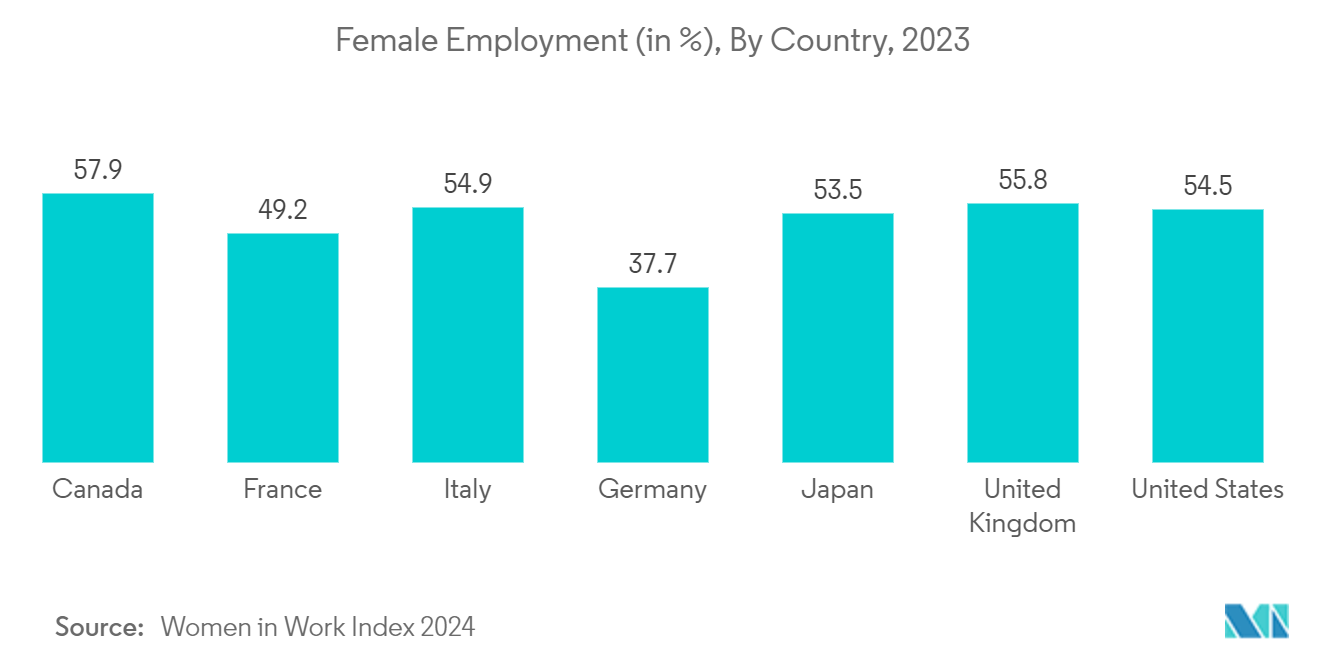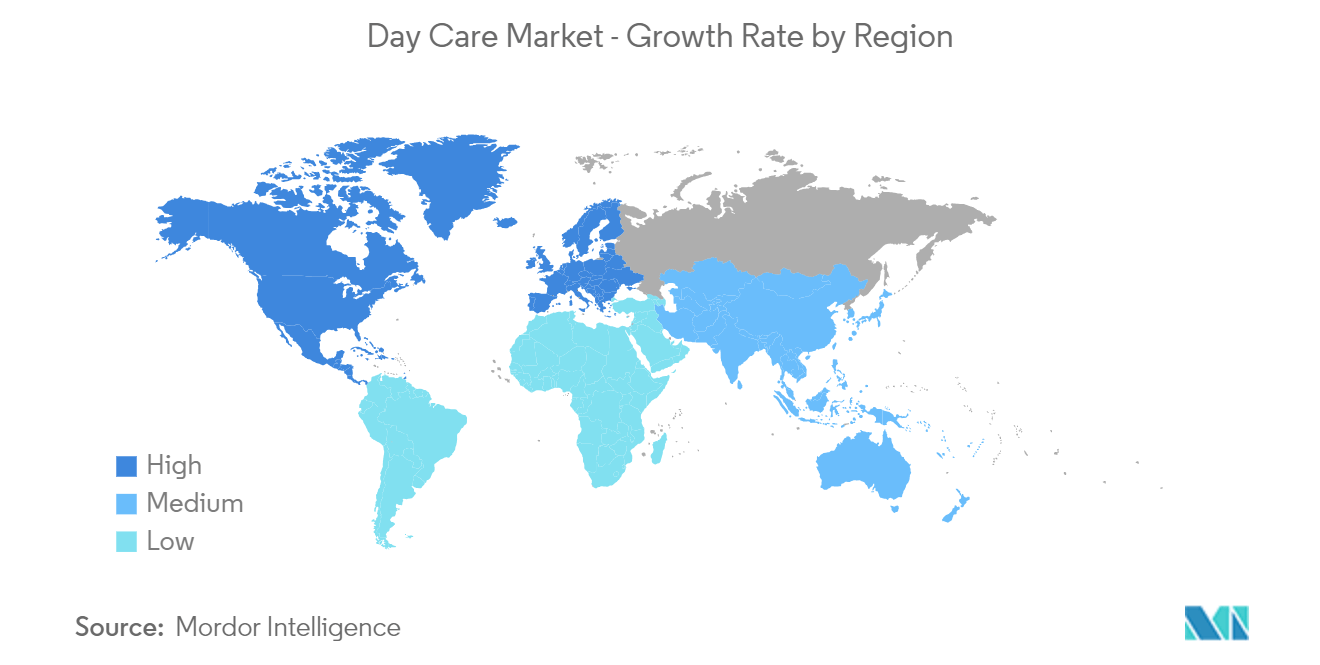Market Trends of Day Care Industry
The Center Based Segment is Expected to Hold a Significant Share in the Market During the Forecast Period
The center-based segment is experiencing significant growth driven by increased workforce participation, as more parents, particularly mothers, are entering the job market and require reliable childcare. Additionally, there is a growing emphasis on early childhood education, prompting parents to seek programs that offer structured learning environments. Government support, including funding and regulatory improvements, is enhancing the accessibility and quality of these services.
Center-based day care offers several advantages over home-based care, including structured learning environments that promote early childhood education and development. Children benefit from regular social interaction with peers, fostering essential social skills. Many centers employ qualified staff and adhere to strict health and safety regulations, providing greater reassurance to parents.
For instance, as per the Federal Statistical Office (Destatis), as of March 2022, 75% of mothers were employed in Germany, and their share increased by 5% points within the last ten years. Thus, the increasing number of working mothers is anticipated to bolster the demand for center-based care, driving the segment's growth.
Positive government initiatives, including increased funding for early childhood education and quality standards, create a favorable environment for center-based day care growth. These initiatives help reduce financial burdens on families, making quality childcare more accessible. For instance, in February 2023, with a USD 30 million investment, the United States Department of Health and Human Services (HHS) inaugurated the inaugural National Early Care and Education Workforce Center. This center is dedicated to bolstering research, offering technical assistance, and advancing workforce development for early childhood education professionals, with the overarching goal of elevating the quality of care in day care settings.
Additionally, the expansion of day care centers is expected to boost the market's growth. For instance, in April 2023, KLAY Preschool and Daycare, the largest chain of its kind in India, expanded its footprint to 400 centers. The focus is on tier II cities, and the chain is collaborating with over 420 corporates to assist working mothers. This move aligns with KLAY's mission to ease women's transition back into the workforce by offering dependable day care services. Thus, center-based facilities often serve as community hubs, offering resources and support for families, making them an appealing choice for parents seeking high-quality care, thereby boosting the market's growth.

North America is Expected to Hold a Significant Share in the Market During the Forecast Period
The North American day care market is experiencing significant growth driven by several key factors. Increased workforce participation, particularly among mothers, has heightened the demand for reliable childcare solutions. Additionally, a growing recognition of the importance of early childhood education has led parents to seek high-quality programs that promote cognitive and social development. Government initiatives and funding to improve childcare accessibility and quality further bolster this demand.
As more parents, especially mothers, join the workforce, the demand for reliable childcare options has surged. For instance, as per the Bureau of Labor Statistics, in March 2024, at least one parent was employed in 91.9% of families with children in 2023, marking an uptick from 91.2% in 2022. The participation rate for mothers with children under 18 climbed to 74.0%, a rise of 1.1% points from the prior year. Specifically, among mothers with children under 6, the participation rate stood at 68.9%. This rate saw a notable increase to 77.8% for mothers with children aged 6 to 17. Meanwhile, the participation rate for fathers with children under 18 increased from 92.9% in 2022 to 93.4% in 2023. This trend creates a greater need for day care services, leading to market expansion as providers work to meet the rising demand, thereby boosting the market's growth.
Many governments in North America are implementing policies to support and subsidize childcare services, making them accessible and affordable for families. For instance, as per the data published by the Government of Canada in May 2024, the Canadian government rolled out a national early learning and child care (CWELCC) system. This initiative seeks to offer affordable, adaptable, and top-notch child care throughout the provinces and territories. By 2026, the program aims to slash average fees for regulated child care to just USD 10 a day, a move poised to benefit families with young children. These initiatives encourage the establishment of new day care centers and improve existing facilities, boosting the market's growth.
Moreover, many day care centers are evolving into community hubs that offer resources and support for families. This added value enhances the attractiveness of these facilities, drawing in more parents and increasing overall demand for day care services. For instance, in May 2024, Elon University enhanced its amenities for faculty, staff, and student parents by introducing a new on-site child care center, set to open in Spring 2025. Situated on South Campus, the center served children from infancy to age two when it launched in Spring 2025. Such establishments attract more families to enroll their children in these settings, contributing to the expansion of the market.
These factors foster a thriving environment for the North American day care market. With families increasingly prioritizing quality childcare and education and bolstered by a rise in working parents and supportive government initiatives, the establishment of day care centers is set to propel the market's growth in the region during the forecast period.


